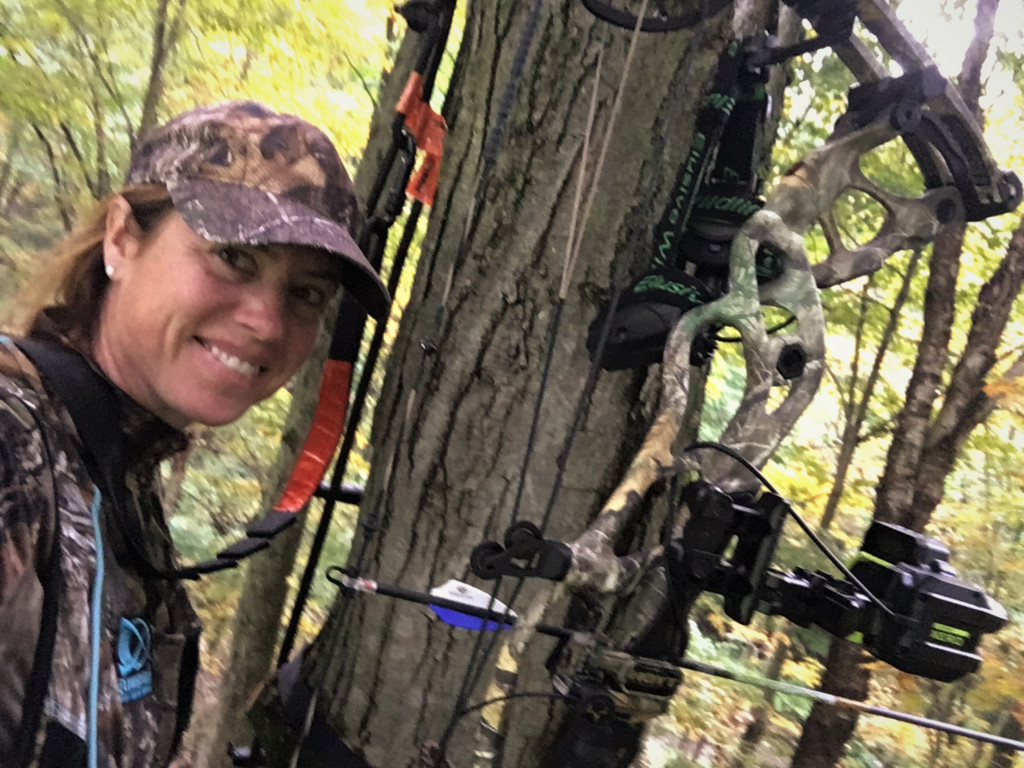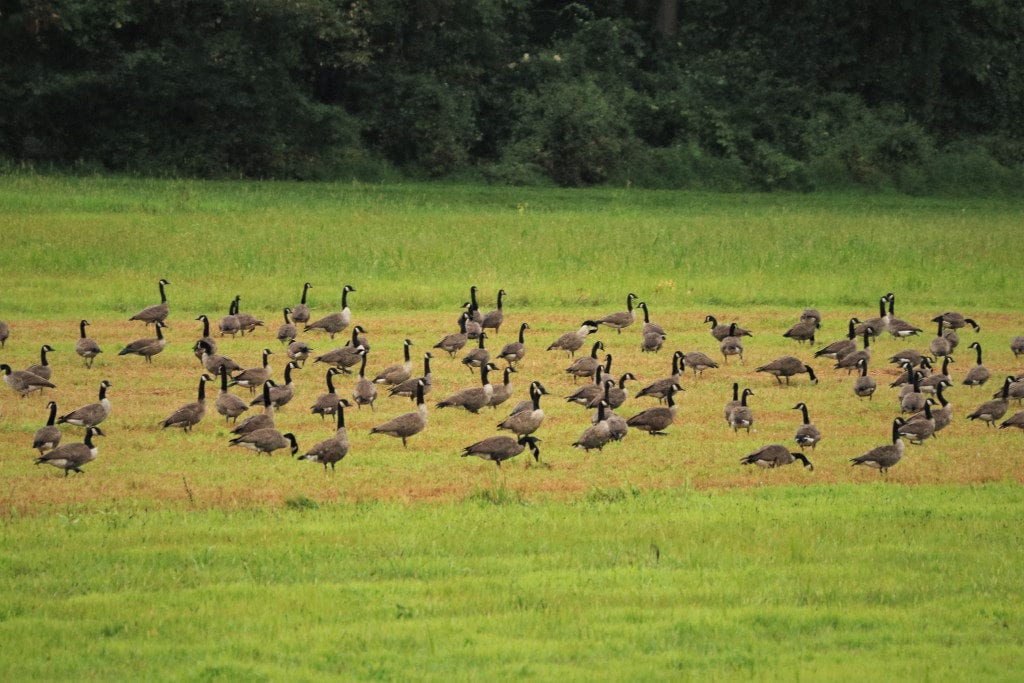By Ta Enos
I spent my twenties working as a newspaper reporter in Alaska. One thing that struck me from my travels in the Bush was how Alaska Natives I met often used harvest seasons to mark time. Events happened “before salmon season” or “after herring,” or “during moose.”
I admired their subsistence lifestyle. How neat would it be, I thought, to have more of my own life tied to the seasons of the natural world.
Today, incredibly, my life is tied to the seasons. And hunting has everything to do with it.
About a decade ago, I moved back home to Warren County, in the Pennsylvania Wilds, where I grew up. If you have never been to the Pennsylvania Wilds, it is a large rural area the size of Massachusetts that is home to the greatest concentration of public lands in the Commonwealth — 29 state parks, eight state forests, 50 state game lands, and our state’s only National Forest. Look at any map of Pennsylvania. The big green mass in the north central part of the state? That’s the Wilds. We have as much public land as Yellowstone National Park, and almost all of it is open to hunting.
Like Alaska, the Wilds has a strong hunting culture, but I didn’t learn to hunt until I met my husband, a Pennsylvania farm boy, in my early-30s. He grew up playing in the woods and creeks around Warren and loves the outdoors.
If you weren’t raised in a hunting family, it can be intimidating to start. There is so much to learn – about weapons and safety, fair chase ethics, the animal’s seasons, habitat, patterns, sign. My husband taught me how to nock an arrow, the importance of scent control, how to spot buck rubs, and many other things.
With the mentoring, my husband’s love for hunting soon became my own. Hunting taught me patience and decisiveness, built my confidence and also made me more humble. It helped me build a sense of community after so many years away, and as my own family grew, it became a way for my husband and me to spend time with our three young boys (and feed them!). In the off season we walk through Grampa’s fields, check trail cameras, and work on food plots. The harvest season these days is all about logistics – who gets to go out, who stays behind with the baby — so everyone old enough to hunt gets their time in the woods.
I will never forget my first turkey hunt, in the Allegheny National Forest. Up at 3:30 a.m. to get to where I needed to be by 5. Just before sunrise, me and two seasoned turkey callers, John and Dave, are walking in full camo up a dirt road that runs through the forest.
Dave makes an owl sound. A gobbler responds. Dave’s eyes get big. He points to where he thinks the sound came from. John nods in agreement.
“We’re coming for you buddy,” Dave says with a big smile and the three of us start booking it in that direction. In the distance, an actual owl hoots.
“That was a real one!” I whisper.
John smiles and nods. They do this all season, taking newcomers out. They are great sports about it.
Dave stops and points up a gully. “What do you think John, up that draw?” John nods. We start up, making our way over big rocks and slash. Dave stops to pick up a can he finds on the ground. He stuffs the trash into a pocket of his vest and keeps moving.
Another gobble. Dave points to an ash tree and instructs me to sit at the bottom of it. I plant my butt on the ground and sling my leg over a log that is surrounded by white and purple mayflowers. The air smells of leeks.
John takes a seat in front of a moss-covered boulder nearby. They start calling and it is like my husband described it to me after his first hunt with them, “they’re like two turkeys talking in the woods.” It is fun just to listen to them call.
Before long, we are on the move again, huffing for twenty minutes straight up another hill. “This is like some crazy Jim Shockey sheep hunt,” Dave says, smiling.
At the top, they call again and we hear another gobbler. I grab a seat under another tree. Dave sits beside me and John heads downhill a little ways and then starts calling. A gobbler calls back. I can’t see him but I can hear that he is getting closer and closer. I pull up my gun.
“Here he comes,” Dave whispers, and sure enough, I see the turkey’s head pop through the brush.
“Here he comes,” Dave says again. “Just stay calm. Don’t move. Do. Not. Move.”
The tom gobbles with his whole body. His head turns red, blue. He stares us down for what feels like an eternity. Have I ever held a gun this long? The tom knows something isn’t right. He quiets down and disappears back into the forest.
When he doesn’t hear a shot, John returns with a what-the-heck look. “He was just out of range,” Dave says. “He put on a heck of a show.”
I am completely awestruck as we make our way back to the truck. Whitetail hunting involves a lot of sitting. Turkey hunting is an entirely different experience.
“It’s like this whole other world that happens before anyone’s even out of bed!” I say.
I hunted at least half the mornings in May last year, and never got my bird. But just like April is “fish camp” in my house (for the trout opener), May became Spring Gobbler (and this May, I finally did get my bird!).

hand and ready to hunt big game animals.
This time of year, of course, is my favorite. Just as I get to watch the woods come alive in spring turkey, I watch the forest change colors and drop its leaves in Fall archery. Last month, my husband and I set up our archery range behind our barn. We’re out there most nights with our boys now, practicing. I find shooting a compound bow super challenging. The best I can describe it is something I read by Scott Bestul, the Whitetails Editor at Field & Stream. “Archery, I believe, is addictive because it is so intimate,” he wrote, stating that “…when an arrow flies true, I sense a piece of myself arcing through the air and landing in the target. You have to do so many things – large and small – correctly in order to shoot a bow well.”
Last year I didn’t get my buck, but I did harvest a 211-pound black bear with my compound bow (only the 26th woman to do it in Pennsylvania, according to the Pennsylvania Game Commission records). I still can’t believe the bear walked in when it did. But that’s just the sort of adventure that happens when your life starts to revolve around the harvest seasons.
Ta Enos is Founder and CEO of the PA Wilds Center for Entrepreneurship, a nonprofit dedicated to marrying conservation and economic development in the Pennsylvania Wilds. Learn more about the region at pawilds.com/hunt.
The views expressed by the editors, authors or users of this linked article are expressly theirs, and do not necessarily reflect the policies or opinions of Dallas Safari Club Northeast, its employees, members or assigns. Any concerns about a site user’s post should be addressed appropriately to that person. Any concerns about an advertiser, a user or any content on this site should be addressed to contact@dscnortheast.org.




